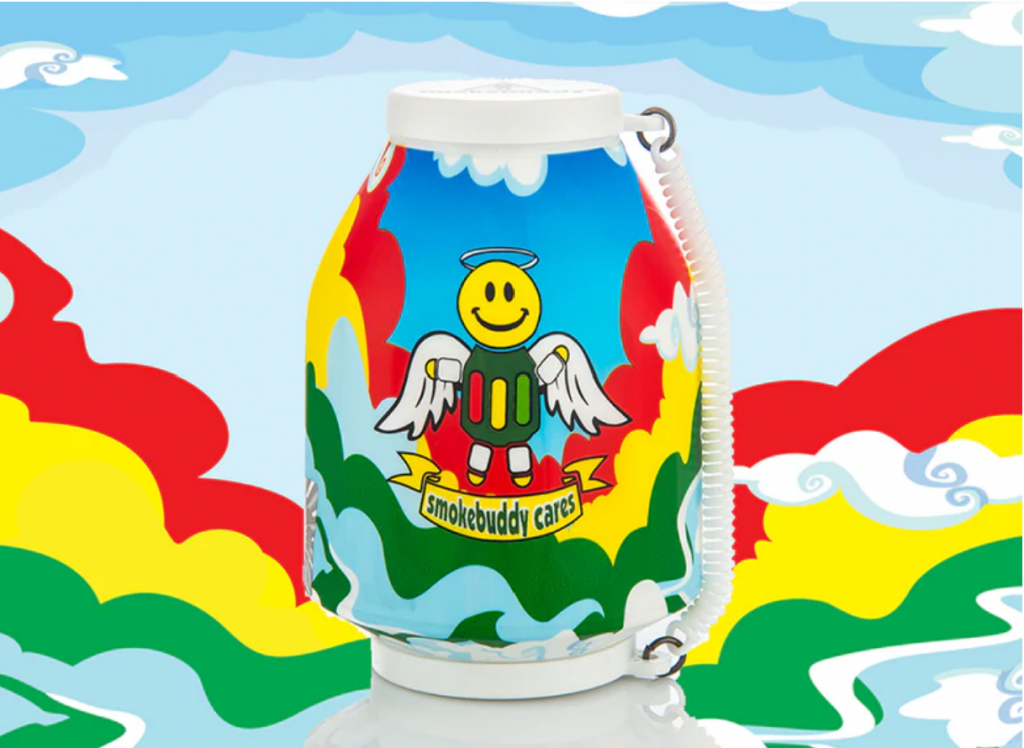You’re ready to shop smart and smoke cleaner. But when it comes to picking the right eco-friendly personal air filter, how do you separate the high-quality from the hype? What are some secret tips on eco friendly personal air filter purchasing?
With so many options on the market claiming to be green, durable, and effective, it’s easy to get lost in the buzzwords.
We’re not here to throw shade at any specific brands.
This is about knowing what to look for in design, materials, construction, and value.
If you care about your air, your wallet, and the planet, this is how you shop a high-quality eco-friendly personal air filter like a pro.
Real quick: Smokebuddy makes some of the best personal smoke filters around. Grab 20% off with the code SLYNG23 before diving deeper.
Understand the Core: What Makes a Filter Eco-Friendly?

Not every filter that calls itself “eco” actually lives up to the claim. Let’s break down what separates a true eco-friendly personal filter from one that just has green packaging.
Recycled or Biodegradable Materials
A real eco-friendly air filter should be made using recycled plastics, plant-based materials, or biodegradable composites.
These materials reduce the product’s overall environmental impact and help keep plastic waste out of landfills.
Look for info on the label or product page that confirms what materials are used. If they’re proud of their sustainability, it’ll be clearly listed. “Post-consumer recycled plastic,” “biodegradable shell,” or “plant-based construction” are key phrases that show you’re dealing with something legit.
The outer shell, mouthpiece, or even internal casing should be built with sustainability in mind. Not just function.
And bonus points if the packaging is recyclable or compostable too.
Reusability and Long-Term Design
The longer your filter lasts, the less waste you create. High-quality eco-friendly models often feature modular designs with replaceable cores or filter cartridges.
That means you keep the shell and swap out the filter. This will help you with saving money and cutting down on waste.
Some filters even include visual wear indicators, letting you know when it’s time to replace the internal components.
If a product brags about being reusable but doesn’t give details on how to maintain or refill it, be skeptical.
A one-and-done product made from recycled plastic is still less eco than a filter you can use for 300+ sessions.
Minimal, Sustainable Packaging
An eco-friendly filter that comes wrapped in three layers of plastic and a styrofoam insert? That’s a red flag.
Brands that care about the planet extend that mindset to their packaging too.
Cardboard boxes, paper-based inserts, and soy-based inks are often used by brands that walk the walk.
If you’re unboxing something that feels excessive, that’s already a sign that sustainability might not be at the core of the product.
What to Look for in Filtration Quality
Green doesn’t mean weak. Your filter still needs to trap smoke, reduce odor, and deliver a smooth session.
Here’s what you need to check for when it comes to functionality.
Multi-Layer Filtration Systems
The most effective eco-friendly filters don’t rely on just one material to get the job done. Instead, they use multi-layer systems that combine activated carbon, ceramic beads, or HEPA-style fibers.
Activated carbon traps odors and airborne chemicals. Ceramic beads help absorb moisture and fine particulates.
Fiber filters catch larger debris and smoke particles. When used together, they create a clean, controlled exhale that’s nearly odor-free.
Make sure the brand mentions what type of media is used. If there’s no mention of carbon or specific filtration layers, there’s a good chance it’s not going to perform at the level you need.
Consistent Airflow With Resistance
A well-built filter should let you exhale smoothly, but not too easily. That slight resistance? It’s a good sign.
It means the filter is actually doing its job and pushing smoke through a dense filtration matrix.
Cheap or poorly designed filters either let too much pass through (reducing their effectiveness) or make it so hard to exhale that it ruins your experience. Look for filters that balance airflow with functionality.
Customer reviews often mention this: scan them for phrases like “easy to exhale,” “good pull,” or “effective odor control” to see how real users describe the flow.
Odor and Smoke Reduction
At the end of the day, this is what you’re here for. A solid eco-friendly personal air filter should leave almost no visible smoke and minimal odor behind.
Look for performance claims that mention real use cases. “99% odor reduction,” “low residual scent,” or “lab-tested filtration” are phrases that show the brand is confident in its product.
Some filters may even be rated in terms of hours or number of exhales. This kind of data helps you make an informed choice and avoid models that wear out too fast.
Longevity and Maintenance: What Makes It Worth the Money?
You’re investing in something that’ll keep your space clean—so let’s make sure it actually lasts.
Replaceable Parts or Refills
High-end eco personal air filters often come with the option to replace just the cartridge or internal filter, not the entire device.
This saves money and drastically cuts back on waste.
If the product you’re considering doesn’t offer refills or replacement parts, be sure the brand is up front about the lifespan.
Filters with 200–300 use ratings should be built to withstand daily use without degrading.
Bonus: Check if the filter is dishwasher-safe or if it can be cleaned with alcohol or warm water. If it’s not meant to be cleaned or maintained, its lifespan might be shorter than advertised.
Durable Housing and Smart Design
The outside matters too. Look for shells that are resistant to heat, water, and everyday drops. Filters with tight seals and reinforced mouthpieces are less likely to crack, clog, or break under pressure.
Design also plays a role. Models that are too bulky or oddly shaped are less likely to become part of your daily routine.
Compact, pocket-friendly filters with thoughtful construction are more likely to stick with you long-term.
Form and function should come together in a way that supports regular use without turning it into a hassle.
Realistic Lifespan Expectations
Any product can promise “hundreds of uses,” but make sure that claim is backed up with user feedback or performance testing. Brands that truly stand by their filters will give realistic timelines and make maintenance instructions clear.
If the company offers customer support, refund guarantees, or a warranty, that’s even better. It shows they’re confident in how long their filter will last and willing to help if it doesn’t meet your expectations.
Price and Value: What Should You Expect to Pay?

Eco doesn’t have to mean expensive, but you do get what you pay for. Let’s break it down.
Price Ranges
Expect to pay around $15–$30 for a high-quality eco-friendly personal air filter. That range usually gets you good materials, solid performance, and a lifespan of 200+ uses.
Anything below that range may lack proper filtration layers or use cheaper plastic that cracks or wears down quickly. You don’t have to go ultra-premium, but avoid bottom-barrel deals that sound too good to be true.
Filters with replaceable cores or modular parts may cost a little more upfront. But the value adds up over time.
Long-Term Cost Comparison
Think of it this way: if you use a disposable filter that lasts 50–100 exhales, and you smoke daily, you’ll be buying a new one every couple of weeks. That cost adds up fast.
In contrast, an eco filter with 300-use lifespan and a $25 price tag breaks down to less than ten cents per use. With refill options, you can get that cost even lower.
Add to that the lower waste, better performance, and peace of mind, and it becomes clear why quality matters when you’re buying a long-term smoking tool.
Final Thoughts: Buying Smart = Smoking Smarter
You’ve got options. But not all filters are built the same. A truly eco-friendly personal air filter does more than just trap smoke.
It respects your space, your lungs, and the environment.
By knowing what to look for—from materials and airflow to replaceability and performance—you’re setting yourself up for smoother sessions and smarter impact.
Skip the flashy packaging, dig into the specs, and don’t be afraid to read the fine print.
When your filter is doing its job, you don’t notice it—you just breathe easier, smell less, and leave the space cleaner than you found it.
That’s how you know you chose the right one.
